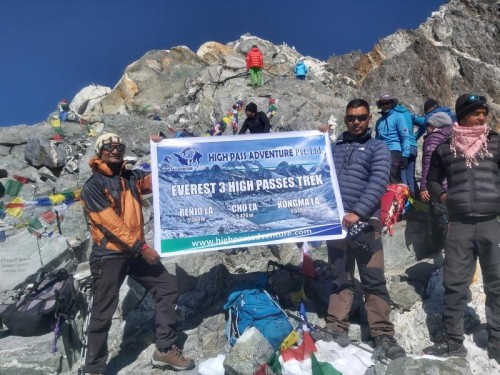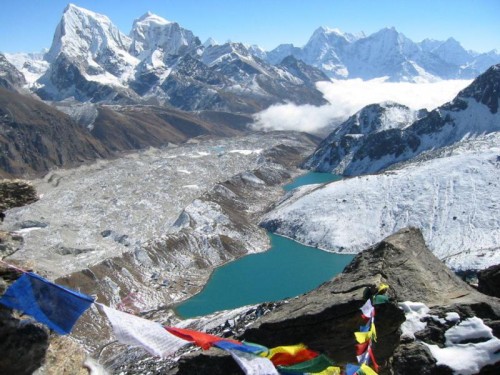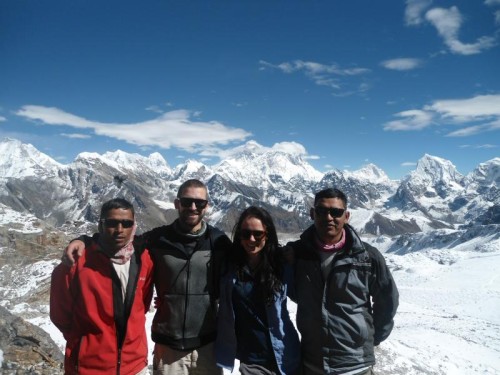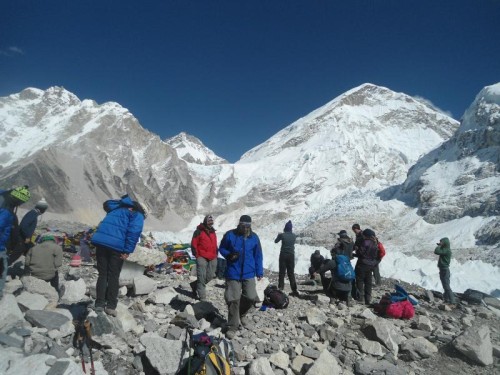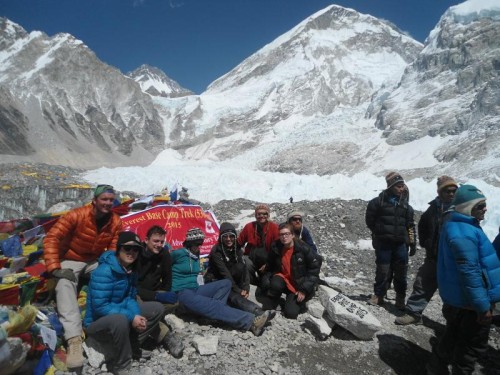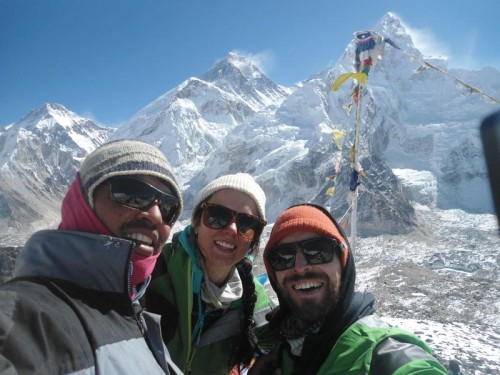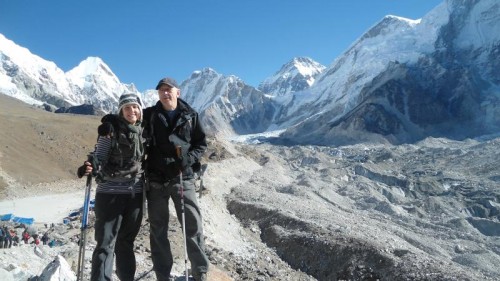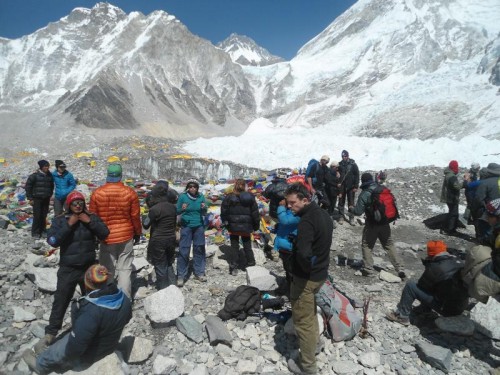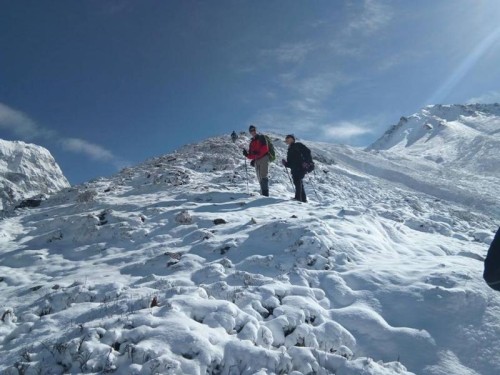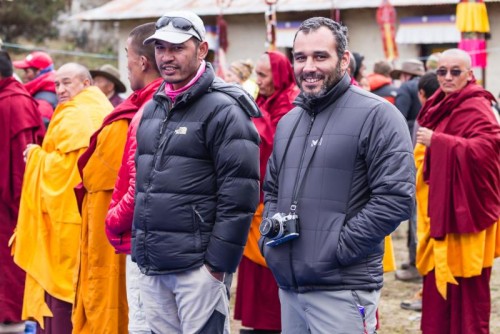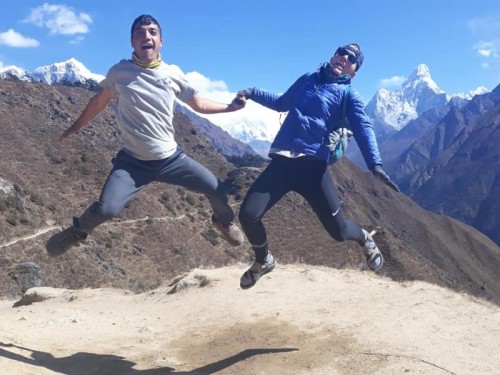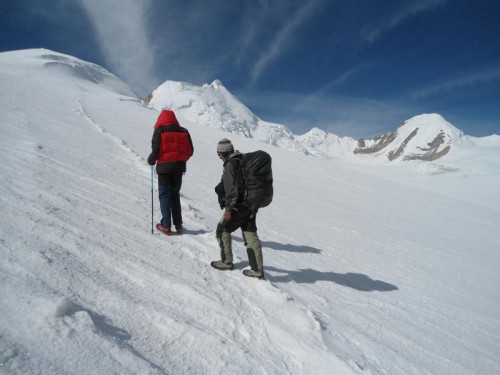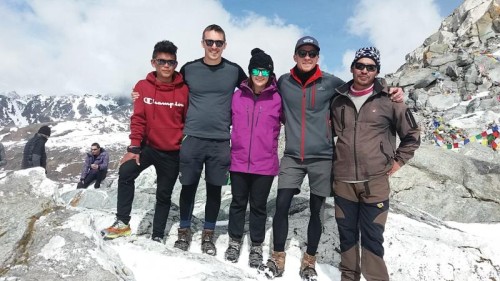Road transport to the Phaplu & flight back from Lukla
For the Phaplu to Everest Base Camp Trek, there are road-accessible starting points and airport-accessible ending points for returning to Kathmandu. You can take a private jeep or public Jeep to Phaplu from Kathmandu to start your journey. Phaplu is 297.0 Km from Kathmandu and takes 8-10 hours by public vehicle, though private transport is faster.
For the return journey to Kathmandu, you must take a flight from Lukla. Lukla is a small town and the starting point for all treks in the Everest region, serving as a gateway with a small airstrip, as there is no road access from Kathmandu to Lukla. Trekkers must either fly to Kathmandu or Ramechhap after completing the Phaplu to Everest Base Camp Trek. Regular flights to Lukla are operated by Tara Air, Summit Air, and Sita Air from Kathmandu or Ramechhap during the main trekking season.
During peak trekking months—March, April, May, September, October, and November—flights to Lukla may operate from Ramechhap/Manthali due to Nepal's aviation rules aimed at avoiding congestion and air traffic delays. Ramechhap Airport is approximately 144 kilometers east of Kathmandu and requires a 3 to 5-hour drive by private vehicle from Kathmandu. This trek follows the same procedure.
Lukla Airport is in the mountain region, so be prepared for potential delays or cancellations, as weather conditions can impact flights from Lukla. If you do not have extra time after your trekking itinerary, you might consider taking a helicopter from Lukla to Kathmandu. Arranging for one or two additional days in your trip is highly recommended to accommodate potential flight delays or cancellations and to ensure you can board your pre-planned international flight.
Requires Permits & Permits Cost for the Trek
The Phaplu to Everest Base Camp trekking route is situated within the Sagarmatha National Park in the Khumbu Pasang Lhamu Rural Municipality in the Everest region of Nepal. Therefore, you need to purchase a Sagarmatha National Park entrance permit and a Khumbu Pasang Lhamu Rural Municipality entrance permit. Another required permit is the TIMS (Trekkers Information Management System) card, which is for your safety and security, as it helps keep track of trekkers' whereabouts in the region. All permits are mandatory for the Phaplu to Everest Base Camp Trek.
These permits can be obtained through a reputable trekking company from the Tourism Board in Bhrikuti Mandap, Kathmandu. The Sagarmatha National Park entrance permit can be buy in Monjo and Khumbu Pasang Lhamu Rural Municipality entrance permit can be purchased in Lukla after starting the journey. You or your guide must carry these permits throughout the trek, as you will need to show them and register at every checkpoint along the trail. If you attempt to trek without these permits, you will need to purchase them on-site at double the cost (as a penalty) or you may be forced to turn back. Requiring permits are given below:-
Khumbu Pasang Lhamu Rural Municipality entrance permits
- Cost: US$ 30 per person, per trek for all foreigners
- Cost: US$ 20 per person for SAARC (South Asian Association for Regional Cooperation) citizens
TIMS (Trekkers Information Management System) Card:
- Cost: US$ 20 per person, per trek
Sagarmatha National Park Entrance Fees:
- Cost: US$ 30 per person, per trek for all foreigners
- Cost: US$ 15 per person for SAARC (South Asian Association for Regional Cooperation) citizens
What are the different costs of the EBC Trek from Phaplu and Lukla?
The costs of the Everest Base Camp (EBC) Trek from Phaplu and Lukla can vary significantly due to differences in transportation, duration, and the route taken. The Phaplu to Everest Base Camp Trek is longer in duration compared to the Lukla to Everest Base Camp Trek, which also results in different transportation, accommodations and food costs.
EBC Trek from Phaplu
Transportation:
- Kathmandu to Phaplu: A flight from Kathmandu to Phaplu costs around $150-$200 one way. Alternatively, you can take a jeep or bus which costs approximately $20-$50, but it takes much longer (8-12 hours).
- Kathmandu to Lukla: A flifgt from Kathmandu to Lukla cost around &216-240 one way. This transportation coat is expensive then Kathmandu to Phaplu.
- Accommodation and Food: The trekking duration from Phaplu to EBC is longer than from Lukla to EBC, so the total cost of accommodations food and guide- porter is higher due to the longer trip duration.
- Overall Costs: The EBC trek from Phaplu may be slightly more expensive overall due to the longer duration and additional transportation costs if flying. However, it can be more economical with public overland transport.
Estimated Total Costs
- Phaplu Route: $1,600-$2,100 (including transport, permits, guide/porter, accommodation, and food)
- Lukla Route: $1,300-$1,800 (including transport, permits, guide/porter, accommodation, and food)
Total Cost of the Phaplu to Everest Base Camp Trek
The total cost of the Phaplu to Everest Base Camp Trek can vary depending on several factors, such as the trekking season, the agency and transport you choose, the duration of the trek, group size, and the level of service. Our standard Phaplu to Everest Base Camp Trek itinerary is 15 days from Kathmandu to Kathmandu, but we recommend allowing a total of 18 days for the trip, including arrival and departure days in Nepal. For our 18-day itinerary, the cost ranges from USD $1,450 to $2,500 per person in a groups. This price includes transportation, accommodation, meals, an experienced guide, a porter, and all required permits for the trek.
Please note that the cost does not cover emergency evacuation, personal drinks, luxury accommodations, or private transportation upgrades.
We recommend obtaining detailed quotations from a few reputable trekking agencies to compare prices and services. However, we are confident in offering high-quality service at a reasonable cost within the above price range for an unforgettable Phaplu to Everest Base Camp trekking experience.
Luggage Load Carried by Porters during the Trek
If you are doing Phaplu to Everest Base Camp (EBC) Trek with just a guide, it will be a cheaper journey, but the guide will not carry your luggage because they are professionals and have their own luggage to carry. In this case, you can hire a porter-cum-guide who handles both guiding and carrying your luggage, typically about 10 to 12 kg.
If you are in a group, we usually assign one porter for every two trekkers, so each trekker's luggage should weigh around 10 kg. If you hire a Porter, a porter typically carries 20 to 25 kg during the trek in Nepal. Trekking with both a guide and a porter highly recommended because they makes walking easier and gives you more free time to enjoy the trekking and climbing, resulting in a memorable trekking experience in Nepal during the Phaplu to Everest Base Camp (EBC) Trek
Phaplu to Everest Base Camp Trek difficulty
The difficulty level of the Phaplu to Everest Base Camp Trek is moderate to challenging due to its length, altitude, and terrain. Proper preparation, a good level of fitness, and strong mental determination are required because there is no road access to the starting and ending points, necessitating flights that can be affected by bad weather conditions. It makes longer duration for the trip. The trek duration is about 17 to 19 days, with daily walking distances ranging from 5 to 8 hours, and there are many obstacles along the way.
This destination can be difficult for those without previous trekking experience, as the starting point is at 2,500 meters in Phaplu, reaching 5,364 meters at Everest Base Camp. Gradual ascent and acclimatization days are necessary. During peak season, early booking for accommodation is essential due to limited availability. In winter, you need to prepare warm clothes because the weather can be extremely cold and harsh. During the monsoon season, the trekking trails can be slippery and tough.
Overall, before starting the trek, you need to do fitness training and mental preparation. During the trek, utilizing tea houses, taking sufficient rest, gradual ascents, acclimatization days, walking slowly, and taking short, easy steps will help you manage the challenges of the Phaplu to Everest Base Camp trek. Following these steps will make your trek highly achievable and immensely satisfying.
Acclimatization day to reduce the Altitude Sickness for the Trip
An acclimatization day is necessary to reduce the risk of high-altitude sickness during the 18-day Phaplu to Everest Base Camp Trek. This trek takes place in a remote, high-altitude area of the Everest Region, starting at 2,400 meters in Phaplu and reaching 5,360 meters at Everest Base Camp. Along the way, trekkers pass through beautiful Sherpa villages, forests, and other high-altitude landscapes with rocky, muddy and icy path. As you ascend, oxygen levels and air pressure decrease compared to sea level. Once you reach an altitude above 3,500 meters, you may experience symptoms of altitude sickness, such as nausea, vomiting, diarrhea, headaches, loss of appetite, tiredness, dizziness, and sleeplessness.
You will have some acclimatization due to the long duration of the trek and crossing the some high area. However, Namche Bazaar and Dingboche are designated as acclimatization rest days in the itinerary to help reduce the risk of altitude sickness during this trip. These rest days also help prevent altitude sickness and allow you to adapt to the environment.
If you experience any symptoms of altitude sickness during this journey, it is important to address them immediately to avoid difficulties in completing the Phaplu to EBC trip. To prevent these issues, you should follow your guide's instructions, as they are knowledgeable about high-altitude sickness as well as follow the itinerary closely, as proper acclimatization helps your body adapt to higher elevations. Additionally, stay hydrated by drinking plenty of water, eat a well-balanced diet with sufficient carbohydrates, maintain a comfortable pace, and avoid alcohol and sedatives.
When ascending on the 3,500 meters, be honest with your guide about how you are feeling. Your guide will advise you to walk slowly and may suggest that you sleep at a lower altitude before ascending further. This practice, known as acclimatization, helps reduce the risk of altitude sickness. However, if you continue to feel unwell despite following these recommendations, you should return to a lower altitude.
About Diamox — a medicine for high altitude sickness
Diamox is the brand name for Acetazolamide, a medicine that helps prevent and treat altitude sickness (Acute Mountain Sickness, AMS). When trekkers ascend to higher elevations, oxygen levels decrease. Taking Diamox helps your body adjust faster to high altitudes by stimulating deeper and faster breathing, allowing you to take in more oxygen. Diamox works by making your blood more acidic, which signals your body to breathe faster at high elevations. This helps reduce symptoms such as headaches, nausea, and dizziness.
Based on our experience and advice from our altitude doctor, if trekkers have previous high-altitude trekking experience (around 4,000 to 5,000 meters) in Nepal, there is usually no need to take Diamox. However, if trekkers are trekking at these altitudes for the first time, it is recommended to start taking half a tablet of Diamox from the first day of the hike.
For example, all trekking route in Nepal, where the maximum elevation is 4,500 to 5500 meters, it is advisable to start taking Diamox from the first day of the trek. After taking Diamox, some people may experience side effects such as tingling sensations in the skin. Therefore, it is important to drink at least 4 liters of water per day while trekking and taking Diamox.
Important Notes
- Diamox is not a cure — it just helps prevent or lessen AMS.
- Stay hydrated — Diamox acts as a diuretic (you'll pee more!).
- Common side effects: Tingling in fingers, frequent urination, and slight taste changes.
- Always ascend slowly, even with Diamox.
- Never use Diamox as an excuse to climb too fast!
Best Time for Phaplu to EBC Trek
The best times for the Phaplu to Everest Base Camp (EBC) Trek are during the pre-monsoon (spring) and post-monsoon (autumn) seasons. These seasons offer sunny and warm weather with clear skies, providing wonderful mountain views and ideal conditions for photography. While spring brings blooming flowers, autumn provides crisp, clear views and stable conditions.
Winter (December to February) is also an option and a recommended time for this trek. During winter, you can avoid crowds and enjoy some solitude with nature and culture. However, the temperature can be quite cold for most trekkers, and there can be a lot of snow on some trekking trails, especially at higher altitudes.
Summer (June to August) is not recommended for the Phaplu to Everest Base Camp Trek because of the frequent rain during this time. The rain can make it difficult to get flights on time and can cause landslides along the trail. Additionally, visibility may be poor for views.
So, you have to choose the right time to trek from Phaplu to Everest Base Camp. The right time will make your trek enjoyable, memorable, and enhance your overall experience, allowing you to appreciate the beauty of the Himalayas to the fullest.
Spring (March to May)
- Days are warmer with clear skies, providing excellent views of the mountains.
- Night temperatures are generally moderate, though it can still be cold at higher altitudes.
- Rhododendrons and other wildflowers are in full bloom, adding vibrant colors to the trail.
- A great time for photography and enjoying the natural beauty.
- Opportunity to experience local festivals like Mani Rimdu and other cultural events in the Sherpa villages.
Autumn (September to November)
- Stable and clear weather with minimal rainfall.
- Crisp and clear skies provide stunning views of the mountains.
- Cooler temperatures, especially in the evenings and at higher elevations, but still comfortable for trekking.
- This is the peak trekking season, so trails and teahouses will be busier compared to spring.
- Despite the crowds, the infrastructure and services are fully operational, ensuring a smooth trekking experience.
- Festivals such as Dashain and Tihar in Nepal can be experienced, offering a glimpse into local traditions and celebrations.
Monsoon (June to August):
- Heavy rainfall can make trails slippery and challenging.
- Higher risk of landslides and flight cancellations.
- Leech-infested trails at lower elevations and cloud cover can obstruct mountain views.
Winter (December to February):
- Very cold temperatures, especially at higher altitudes.
- Possible heavy snowfall can make some parts of the trek difficult or impassable.
- However, the trails are much quieter, and the skies can be very clear, offering beautiful views.
Food and Accommodation during the Phaplu to EBC Trek
There are many teahouses for accommodation and restaurants for food along the trekking trail from Phaplu to Everest Base Camp. The Everest Base Camp route is famous, leading to new buildings being added each year to accommodate more trekkers. You'll find various types of accommodation and food options along the trail, with some lodges offering luxurious facilities. Normally, lodges provide private rooms with two beds and shared indoor bathrooms. The quality of lodges varies at different places, allowing you to choose the best option based on your budget.
Tea Houses/Lodges for accommodation:
- Availability: Tea houses and lodges are available throughout the trek. They are more basic and rural at lower altitudes and can be quite simple and functional at higher altitudes.
- Facilities: Rooms are usually twin-sharing with basic beds, blankets, and pillows. Some lodges may offer attached bathrooms at lower altitudes, but this is uncommon at higher elevations.
- Toilets: Western-style toilets are available at some tea houses, but squat toilets are more common, especially as you go higher. Hot showers may be available for an extra charge, though the water may be heated by solar power or gas.
- Dining Rooms: Most tea houses have a communal dining area that is heated, often by a wood or yak-dung stove. This is where trekkers gather to eat, socialize, and warm up.
- Electricity and Charging: Electricity is available in most tea houses, but charging electronic devices usually comes with an additional fee. Power outages can occur, especially in remote areas.
- Wi-Fi: Some tea houses offer Wi-Fi, usually for an extra charge. The quality and speed of the connection can vary greatly.
Food at the teahouses or restaurants:
Along the Phaplu to Everest Base Camp Trek, there are tea-houses, lodges, restaurants, and tea shops that provide the food to trekkers. Every place generally has a similar food menu, offering a variety of dishes, but prices are different due to its elevations and quality of service. You can choose from a range of food items on the menu. The cooks at these establishments are usually trained specially at higher altitude but the taste of the food may be different from what you're used to in the West.
Most of the lodges in the region have gardens where they grow fresh vegetables, which they use to prepare meals for their guests at lower altitudes. This ensures that the food is fresh and locally sourced. So, normally you will find a variety of food options at the tea houses or lodges along the trail.
Food Items:
- Breakfast: Typically includes items like porridge, eggs, toast, pancakes, and Tibetan bread.
- Lunch and Dinner: Common options are dal bhat (lentil soup, vegetable with rice), momos (dumplings), noodle soup, fried rice, and pasta. Dal bhat is highly recommended and a popular choice among trekkers because it is nutritious, comes in large portions to fill you up, and provides a good energy boost.
- Snacks and Drinks: Tea houses offer various snacks such as biscuits, chocolates, and local delicacies. Hot drinks like tea, coffee, and hot lemon are readily available.
- Vegetarian Options: Easily available throughout the trek. Given the remote location, vegetarian meals are often the safest and most readily available option.
- Other Dietary Restrictions: It’s best to inform your guide or the tea house owners in advance. Options may be limited, so carrying some of your own snacks or supplements is advisable if you have specific dietary needs.
Communication in the Everest Region
Everest Region is popular trekking destination In Nepal. There is good mobile network service around Everest base camp trekking area but not a Gokyo Valley and Chukkung Valley. The internet service available whole Everest Region but tea-houses and lodges provide internet with some extra charge. If you have not Nepali SIM card for communication with your family and not use the internet service, our guide help to you for pass the massage because always our guide have cellular phone and he contact to Kathmandu trekking office about to know the trek and your health condition.
Hence, travelling is important things in life so we make sure you about safe and healthy during the trekking in Nepal. Nowadays, you can get the local SIM card in Kathmandu airport after arrival to use the 3g and 4g internet service because most of the trekking routes in Nepal have Mobile Network service.
Electricity and Charging Facilities
Most teahouses along the Phaplu to Everest Base Camp Trekking trail have electricity, but availability is limited at higher elevations like above then Tengboche. Electricity in most areas is often generated by mini hydroelectric power, while solar power is more common in teahouses at above Tengboche. Charging electronic devices like phones and cameras usually incurs an extra cost, typically ranging from 200 to 1000 NPR per device for a full charge. During the busy trekking season, charging facilities will be in high demand, so it is highly recommended to bring a power bank to charge your electronic devices.
Tipping information
The trekking and climbing guide, as well as the porter, is essential to the success of the trip, ensuring that it is completed smoothly and without issues. Tipping is an important aspect of trekking in Nepal, as it acknowledges and appreciates the hard work of the local staff who assist you throughout your journey. It is customary to tip at the end of the trek, and you should gather all team members (guide, porter, assistant guide) together to distribute the tip. Tips are generally given in cash, preferably in US dollars or Nepalese rupees, and it is best to use small denominations to facilitate easier distribution
While the typical guideline is to tip around 10% of the total payable amount, you can adjust this based on the quality of service provided. Recommended tipping amounts are as follows:
- Guide: $12-$15 per day
- Climbing Guide: US$ 80 total
- Porter: $8-$10 per day
- Assistant Guide: $8-$12 per day
These tips are highly recommended to motivate the team and reward them for their outstanding service, contributing to a memorable and inspiring experience.
Trip extension
If you have extra time after complete the trek, you can do different activities or different short trek in Nepal. We have many short tour packages and adventure activities such as Chitwan National park and Bardiya National Park for Jungle safari tours. You can visit Pokhara city, Nagarkot Hiking, Dhampus hiking or day Rafting tripin Trisuli River.
Adventure activities are like paragliding, canoeing, Ultra light flight, Bungee Jump and Mountain Biking. These all package are extra activities as optional tours and not included in your package cost. If you will do these activities after the trip with us, we arrange at a reasonable cost and we give to you good discount.
Required packing list for Phaplu to EBC Trek
Travel equipment is essential to pack before your trip. Below is the recommended packing list. We understand it may seem like a lot to carry from home, so we suggest packing light and bringing only the necessary items. If you’re missing something, you can hire or buy it in Kathmandu, especially around Thamel.
These general items are suitable for all seasons while trekking in Nepal, but the list may vary depending on the season and the duration of your chosen trek. It is highly recommended to choose lightweight and multi-functional gear and to minimize unnecessary items. This approach will help reduce the weight of your pack and make your trekking experience more comfortable. Therefore, it’s important to ask your trekking organizer for a detailed packing list specific to your trek. They will provide you with clear information about what to bring.
Requirements Documents:
- Passport and 4 passport size photos
- Travel insurance details (in case an emergency evacuation if needed)
- Boarding passes for flights
- Driver’s license (if needed)
- Cash USD
- Credit/Debit Card (Ensure you have $500 on your card incase an emergency helicopter evacuation is needed)
Logistics Things:
- Sleeping bag (Comfort rating -15 Celsius recommended)
- Sleeping bag liner (Optional)
Necessary Footwear Things:
- Trekking boots: One pair lightweight
- Sandals for city and tea house footwear
- Shoes for the plane and tea houses (Optional)
- Gaiters for hiking in winter to the base camp
- Thin, lightweight inner socks
- Thick, warm wool hiking socks
Comfort Clothing for body:
- Please make sure that you have non-cotton clothing for trekking:
- Base-layer t-shirts (e.g. running t-shirts)
- Fleece/Windproof jacket
- Waterproof jacket
- Down jacket for warmth
- Travel clothes and City Wear
- Underwear
- Base-layer trousers (optional)
- Waterproof trousers
- Trekking trousers
- Trekking shorts (Optional)
- Gloves and wool hat
- Bandanna or scarf
Health Requirements (Basic First Aid Kit)
- First-aid kit; should contain lip salve, Aspirin, Band Aids, anti-histamine, Imodium or similar tablets for mild cases of diarrhea
- Re-hydration powder, extra prescription drugs you may be taking if any particular
- Wet wipes for cleaning can be purchased in Kathmandu
Others necessary things:
- Sunglasses and Sun cream
- Towel
- Book (reading and writing materials)
- MP-3 /Music, headphones and ear plug (who know some people on group are snoring) as optional.
- Travel wash
- Hand sanitizer, wet wipes
- A day bag: 35 liters
- A duffel or rucksack with straps to go over your back (Max 12 kg of weight for porters to carry)
- Dry Liner or Dry Bag
- Water bottle/thermos/ camel bag: At least 2 L. Nalgen bottles best.
General Toiletries:
- Toilet papers/ tissue
- Contact lenses, Glasses (if needed)
- 1 medium sized quick drying towel
- Tooth brush/paste (preferably biodegradable)
- Multipurpose soaps (preferably biodegradable)
- Nail clippers
- Face and body moisturizer
- Feminine hygiene products
- Small mirror
- On Personal Hygiene
- Wet wipes (baby wipes)
- Anti-bacterial hands wash
Others (Optional) Things
- Trekking Poles
- Large plastic bags – for keeping items dry inside your kit / duffel bag
- Travel game i.e. chess, backgammon, and scrabble. (for luxuries)
- Binoculars (for luxuries)
- Trail Map/Guide book (if you are alone)


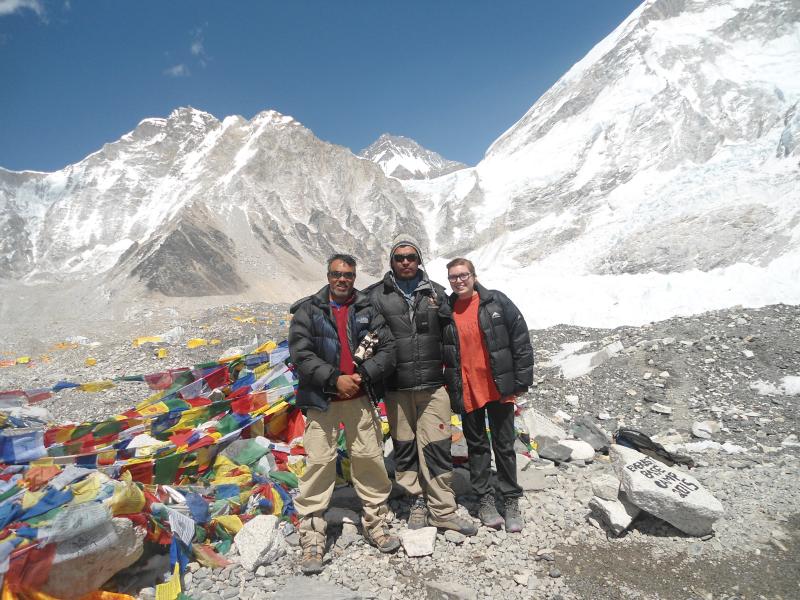




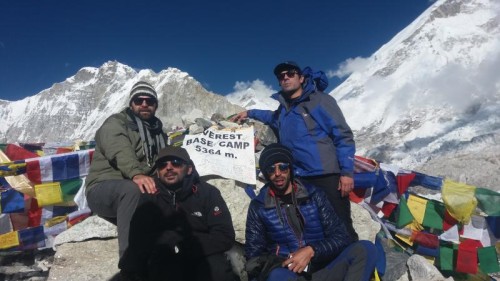
 USD 1325
USD 1325
